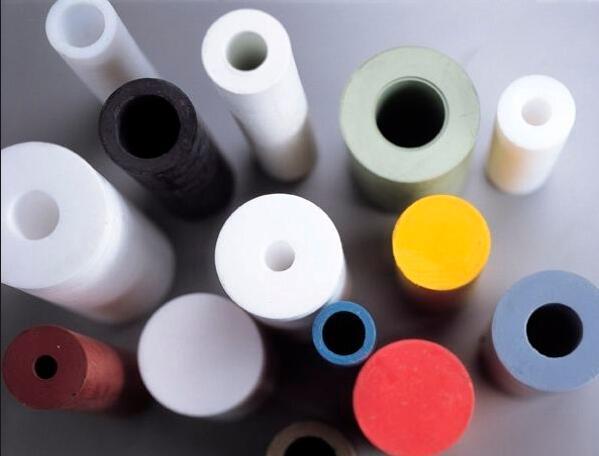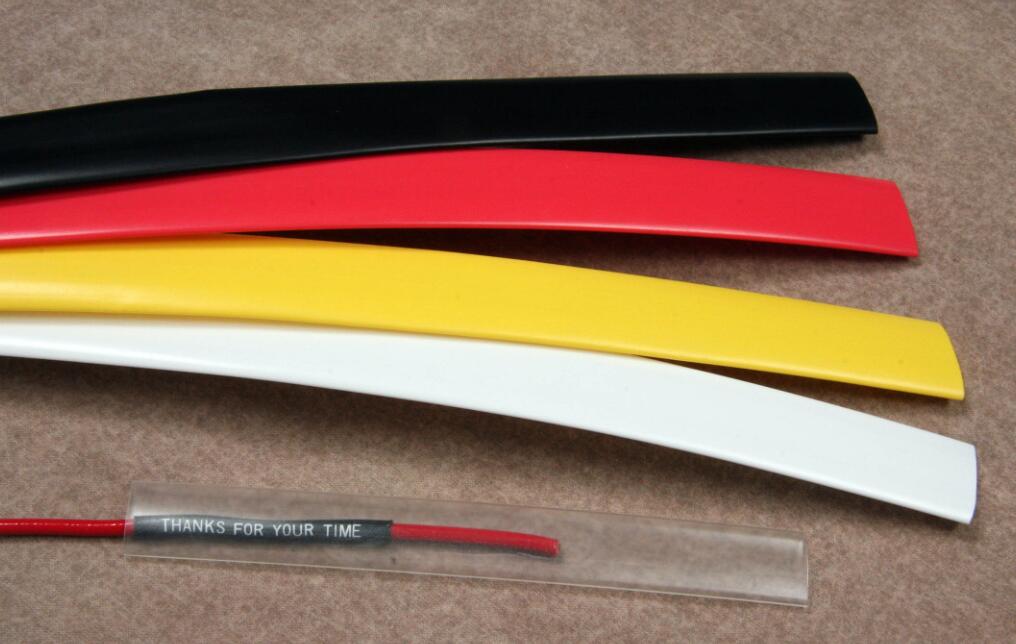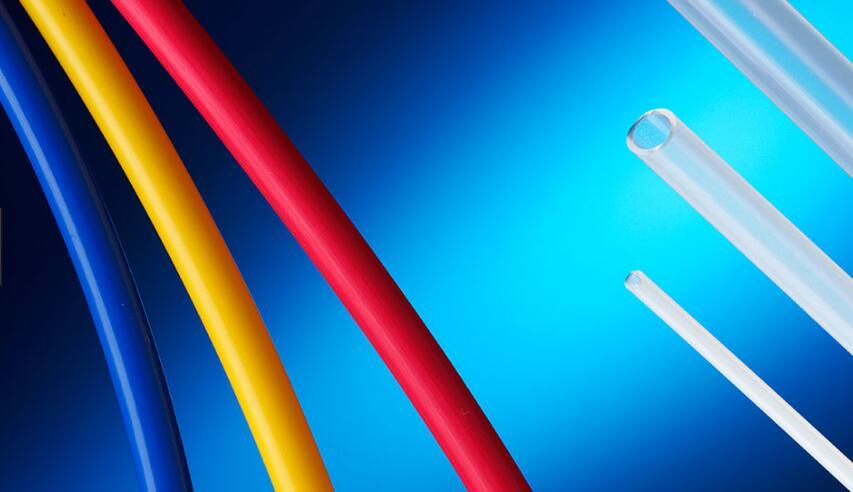PTFE is called “the king of plastics”. Roy Planck, the father of fluororesin, began to study Freon’s substitutes at DuPont in the United States in 1936. They collected part of the tetrafluoroethylene and stored it in steel bottles, preparing for the next experiment the following day, But when the pressure reducing valve of the cylinder was opened the next day, there was no gas overflow. They thought it was leaking, but when weighing the cylinder, they found that the cylinder had not lost weight. They sawed open the steel bottle and found a large amount of white powder, which was polytetrafluoroethylene (teflon).
PTFE is called “the king of plastics”. Roy Planck, the father of fluororesin, began to study Freon’s substitutes at DuPont in the United States in 1936. They collected part of the tetrafluoroethylene and stored it in steel bottles, preparing for the next experiment the following day, But when the pressure reducing valve of the cylinder was opened the next day, there was no gas overflow. They thought it was leaking, but when weighing the cylinder, they found that the cylinder had not lost weight. They sawed open the steel bottle and found a large amount of white powder, which was polytetrafluoroethylene (teflon).

Characteristics and properties:
The mechanical properties of PTFE are relatively soft. PTFE has a series of excellent performance properties:
- High temperature resistance: long-term use temperature of 200 ~ 260 degrees;
- Low temperature resistance: still soft at -100 degrees;
- Corrosion resistance: resistance to aqua regia and all organic solvents;
- Weather resistance: optimal aging life in plastic;
- High lubrication: minimum coefficient of friction (0.04) in plastics;
- Non-viscous: minimum surface tension in solid materials without adhering any substance;
- Non-toxic: with physiological inertia and excellent electrical properties, it is an ideal C-Class insulation material, newspaper thick layer can block the high voltage of 1500V. It is smoother than ice.
The friction coefficient of PTFE is very small, only 1/5 of that of polyethylene, which is an important feature of perfluorocarbon surface. And because the inter molecular force of the fluorine-carbon chain is extremely low, PTFE is not viscous. PTFE maintains excellent mechanical properties in a wide temperature range of -196 to 260 ° C. One of the characteristics perfluorocarbon polymers is that they are not brittle at low temperatures. PTFE has a high density of 2.14-2.20g / cm3, with almost no water absorption, and the equilibrium water absorption rate is less than 0.01%. PTFE is a typical soft and weak polymer. The mutual gravitational force between macromolecules is small, and the stiffness, hardness, and strength are small. It will deform under long-term stress.

Technology Overview
Suspension polymerization: in the polymerization kettle, water used as a medium, ammonium persulfate used as an initiator, and dilute hydrochloric acid used as an activator, tetrafluoroethylene is polymerized at a pressure of 0.5-2 MPa and 40-45 ℃ to obtain white particles , and to obtain powdered polytetrafluoroethylene with different particle sizes after mashing, grinding, and drying.
Dispersion polymerization: A small amount of dispersant (ammonium perfluorooctanoate) and stabilizer (fluorocarbon compound) are added to initiate polymerization with a redox catalyst. Polymerization is divided into high pressure and low pressure. The high pressure is 2 MPa and 25 ℃, and the low pressure is 0.6-0.7 MPa and 0-38 ℃. A polytetrafluoroethylene polymerization solution is generated by dispersion polymerization, and a dispersion resin is obtained by coagulation, drying, and screening.Through dispersion polymerization, under the action of ion-free water and various auxiliaries, a white emulsion is formed. The emulsion is evaporated and concentrated through a concentration kettle to form a concentrated liquid, that is, a dispersed emulsion.
Dispersion resin has better processing performance and product performance. Polytetrafluoroethylene is refractory and has poor fluidity. Its particle size and particle shape have an important influence on melt fluidity, its processing properties and product properties. The difference in the quality of suspended resins and dispersed resins is due to their particle size, particle size distribution, and particle morphology. The former has a millimeter particle size, while the latter has a submicron size (250-350nm).Suspended resins can be molded and processed, but cannot be extruded in paste form, while dispersed resins can be used for paste extrusion. The molecular weight and crystallinity of PTFE dispersing resins are generally higher than those of suspended resins, with a crystallinity up to 96-98%, and the bending fatigue life is 2300 times longer than that of suspended resins.
The particle size of the dispersed resin produced by emulsion polymerization is small, the particle size distribution is reasonable, and the particle morphology is controllable, therefore with good processing performance and product performance.
At present, about two-thirds of PTFE resins are produced by suspension method and one-third by dispersion method.
In 2019, there are a total of 12 domestic PTFE production companies with a total capacity of about 140,000 tons / year, accounting for more than 40% of global production capacity. However, it should be noted that China’s PTFE production capacity is mainly injection molding grade middle and low-end products.
China’s PTFE production capacity is relatively concentrated. The top six companies in the industry account for about 83% of the total production capacity. The industry leader, Dongyue Group,occupies nearly one-third of the market share.
In 2019, it is estimated that the domestic PTFE output is about 90,000 tons, mainly in injection molding grade middle and low-end products, and the high-end PTFE resin localization rate is very low, which is heavily dependent on imports.China is a net exporter of PTFE. In 2004, China’s PTFE export volume exceeded the import volume, and its capacity expanded significantly from 2010 to 2012, and its export volume increased year by year. In 2010, China’s PTFE export volume exceeded 20,000 tons for the first time and remains at around 20,000 tons / year till now.The import volume has maintained a stable scale of 5000-6000 tons, of which 70-80% of imported PTFE is high-performance modified products to meet the needs of downstream industries for high-end PTFE products. At present, China’s high-end PTFE is mainly supplied by foreign companies such as Daikin in Japan , DuPont in the United States.

Main applications of 5G
With the continuous development of 5G communication technology, the demand for corresponding high frequency and low dielectric materials is also increasing.Fluorine materials have excellent insulation and are not easily interfered by high-frequency radio waves. Fluoropolymers have good low dielectric properties and low loss factors under high-frequency conditions. They can provide ultra-high frequencies and high-speed performance for data centers, signal transmission towers, and personal electronic equipment. Therefore, with the acceleration of 5G, the market demand for high-performance fluoropolymers is also increasing.
The main applications are 5G communication high-speed cables, semiconductors, PCBs and antenna components.
High-frequency and high-speed cable
Teflon resin improves the electrical performance of cable insulation components and jackets and provides them with unmatched fire safety. These characteristics are of great importance for wiring systems(such as High-speed cable) for local area networks (LAN), data centers, and other high-performance telecommunications applications. Therefore, fluoropolymers will be used on high-frequency transmission lines with multiple functions, large data transmission volumes, and high definition.
Semiconductor manufacturing
5G is affecting the development of the semiconductor industry and changing the needs of the industry. PTFE polymers also play an important role in semiconductor manufacturing processes.
PCB and antenna components
In the 5G era, printed circuit boards (PCBs) will be highly dependent on high-performance fluoropolymer materials, which can improve the quality of 5G transmission. PTFE is used for prepreg components in PCBs and antenna systems to achieve high-frequency connections.
Post time: Feb-26-2019

